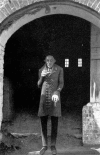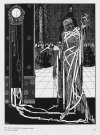Contagious Horror: Infectious Themes in Fiction and Film
- PMID: 31160479
- PMCID: PMC6546279
- DOI: 10.3121/cmr.2019.1432
Contagious Horror: Infectious Themes in Fiction and Film
Abstract
Infectious diseases have been a preeminent part of literature since the earliest human writings. In particular, they have contributed greatly to the genre of horror-written or visual art intended to startle or scare. Horror fiction has emphasized infectious themes from the earliest Babylonian and Hebrew texts. In medieval times, stories of vampires and werewolves often had a contagious component, and pivotal works of Victorian horror centered around fear of infection and contamination. As film became prominent in the 20th Century, a strong emphasis on themes of plague and apocalypse developed. An analysis of the use of infection in horror fiction and film shows that it often represents a metaphor for societal concerns, and it is extremely useful in framing challenging issues for a wide audience.
Keywords: Bubonic Plague; History of medicine; Infectious diseases; Syphilis.
© 2019 Marshfield Clinic.
Figures




References
-
- Epic of Gilgamesh (translation by Georg Burckhardt). Available at https://en.wikipedia.org/wiki/Humbaba.
-
- Enuma Elish: The Babylonian Epic of Creation. 2018. Available at: https://www.ancient.eu/article/225/enuma-elish---the-babylonian-epic-of-....
-
- Exodus 11:4–6. The Bible. King James Version. Available at: https://www.biblegateway.com/passage/?search=Exodus+11&version=KJV.
-
- Maxmen A. How the fight against Ebola tested a culture’s traditions. National Geographic; January2015. Available at: https://news.nationalgeographic.com/2015/01/150130-ebolavirus-outbreak-e....
-
- Stoker B. Dracula. New York: Doubleday; 1897. 200.
MeSH terms
LinkOut - more resources
Full Text Sources
Medical
Research Materials
